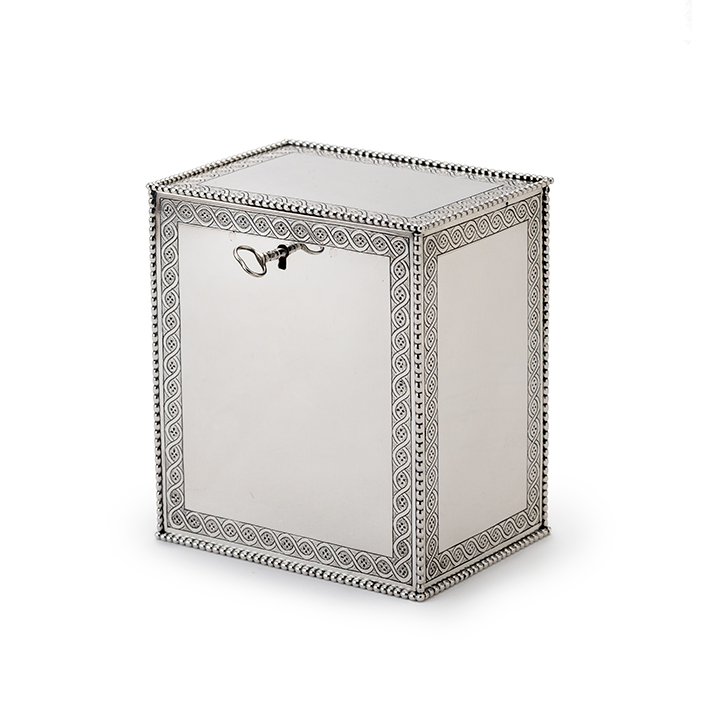
Dutch silver tea caddy
About This Project
Dutch silver tea caddy
Reynier Brandt, Amsterdam, 1781
391 grams; 11cm high, 9,9 x 7 cm width
The sides and hinged lid of the rectangular tea caddy are engraved with a border of horizontal ovals in stipple engravings and are trimmed with a pearl border. A keyhole with a key appears under the lid of the tea caddy. Fully marked on the reverse of the tea caddy.
The silversmith Reynier Brandt was born in 1707 in Wezel (Germany), as the son of Wilhelm Brandt and Anna Katharina Westerholt. On May 5, 1734 he was registered as a citizen (poorter) of the city of Amsterdam with the description ‘silversmith and from Wesel’. In 1734 he was admitted as a silversmith in the guild of Amsterdam. A few years later, in 1737, he married Maria van Wierop, who was already the widow of silk stocking maker Hendrik Swiering. In 1788 the Reformed Reynier Brandt died and was buried on 11 December in the Westerkerk, where his wife Maria was also buried on 11 April 1782. After the death of his wife in 1782, Reynier Brandt went to live with his son Gerrit Brandt, who was also a silversmith, on the Prinsengracht near the Berenstraat. Stepson Reijnier Swiering, who worked for his stepfather, will also have worked for the Peirolet company. Reynier Brandt was very productive during his long life. He has made many baskets, salvers and casters.
Tea culture in the Netherlands
Due to merchants of the East India Company (VOC), who came across tea ceremonies in China and Japan, tea was introduced in the Netherlands. They saw potential in this commodity and started transporting large quantities to Amsterdam, where it was stored in canal houses and then auctioned at high prices. Therefore, tea used to be an exclusive drink for the higher classes. Initially, tea was considered to be a medicinal beverage, which was promoted by doctors like Anthoni van Leeuwenhoek, Boerhave, Tulp and Bontekoe. Tea would purify the blood, stimulate the mind and thus enrich the East India Company stakeholders. At the end of the seventeenth century tea was still a luxury product, drunk by wealthy ladies, who organised tea parties. In the beginning of the eighteenth century the popularity of tea increased. A special room in the house and even outside the house was furnished with a tea table and all the necessary accessories. Still standing tea domes at the river Vecht are relics of our tea drinking past.
The accessories consisted of precious porcelain and silver items, which stressed the high status of tea. Silversmiths were commissioned to make small silver pots and large silver water kettles with burners on stands. Hot water from the latter ones was poured into the small silver pots, containing the tea. Furthermore, tea caddies (with locks) and tea chests with two or three silver caddies were ordered, for several tea blends.
For more information, click here



